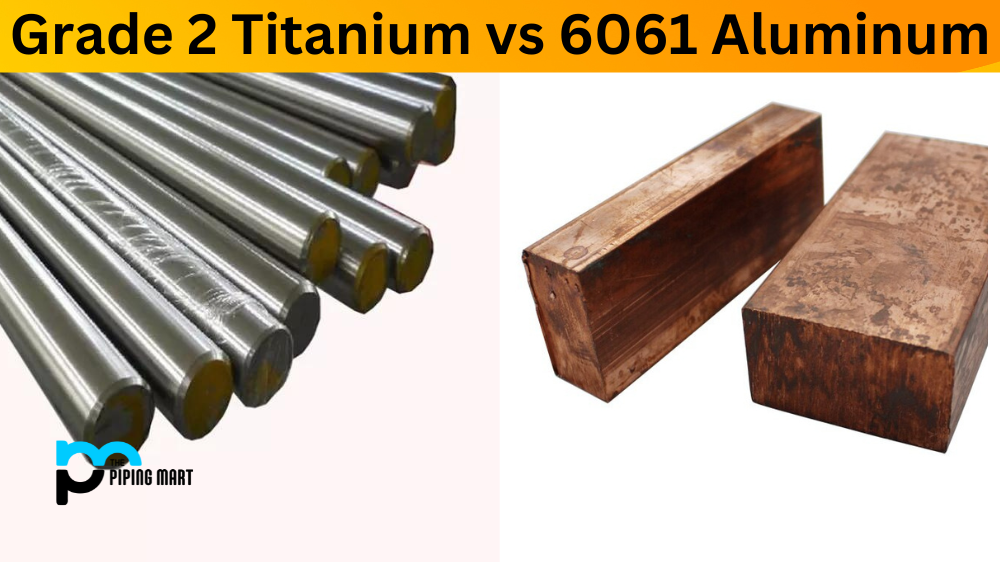When it comes to metal alloys, there are a wide variety of options. Two popular options for their strength and durability are grade 2 titanium and 6061 aluminium. But what’s the difference between the two, and which one is better for your purposes? This post will closely examine these two types of metals and compare their properties, benefits, and drawbacks.
Difference Between Grade 2 Titanium and 6061 Aluminum
Properties
Grade 2 titanium is a lightweight, corrosion-resistant metal often used for medical implants and aerospace applications. It has a low density, high strength, and high melting point, making it extremely durable and capable of withstanding harsh environments. On the other hand, 6061 aluminium is a versatile and weldable metal alloy commonly used in construction, transportation, and consumer goods. It has a good strength-to-weight ratio and is easily machinable, but it is not as corrosion-resistant as titanium.
Benefits
One of the main benefits of grade 2 titanium is its biocompatibility, which makes it ideal for use in medical implants such as joint replacements and dental implants. It is also non-magnetic, which is important for applications such as MRI machines. It also has excellent fatigue and fracture resistance, ideal for high-stress durability applications. As for 6061 aluminium, its benefits lie in its versatility and cost-effectiveness. It is easy to form and extrude, making it ideal for manufacturing processes, and it is readily available and affordable compared to other high-strength alloys.
Drawbacks
One of the main drawbacks of grade 2 titanium is its cost. Titanium is an expensive material due to its rarity and difficulty in processing. It also requires specialized equipment and expertise, which can add to the cost. Additionally, while it is corrosion-resistant, it can still be affected by chemical exposure, such as hydrofluoric or nitric acid. As for 6061 aluminium, one of its main drawbacks is its susceptibility to corrosion. Unlike titanium, aluminium can be prone to oxidation and corrosion, weakening the metal over time.
Applications
Due to its strength, durability, and biocompatibility, grade 2 titanium is commonly used for medical implants, aerospace components, and marine applications. It is also used for sports equipment such as golf clubs and bicycle frames due to its lightweight and high strength. On the other hand, 6061 aluminium is used for a wide variety of applications, including aircraft and marine components, automotive parts, construction materials, and consumer goods such as cans and utensils.
Which one is better for your purposes?
Ultimately, the choice between grade 2 titanium and 6061 aluminium depends on your specific needs and budget. If you require a high-strength and corrosion-resistant material for medical implants or aerospace components, grade 2 titanium might be the better choice despite its higher cost. On the other hand, if you’re looking for a versatile and cost-effective material for consumer goods or construction, 6061 aluminium might be a better fit. It all comes down to what you need the material for and what your budget allows.
Conclusion
In conclusion, grade 2 titanium and 6061 aluminium have unique properties and benefits. Titanium is a lightweight, corrosion-resistant metal ideal for medical and aerospace applications. At the same time, aluminium is a versatile and cost-effective material that is used for a wide variety of applications. Whether you choose grade 2 titanium or 6061 aluminium will depend on your specific needs, budget, and goals. This information lets you decide which material is right for your project.

Hey, I’m Krutik, a casual blogger expert in the metal industry. I am passionate about providing valuable information to my readers. With a background in engineering and construction, I like playing Cricket & watching Netflix shows in my free time. Thank you for visiting my blog, and I hope you find my information helpful!




